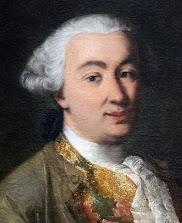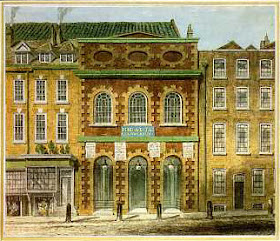Dr Michele Navarra – physician and Mafia boss
Hospital doctor who headed Corleone clan
Michele Navarra, an extraordinary figure who became the leading physician in his home town of Corleone while simultaneously heading up one of the most notorious clans in the history of the Sicilian Mafia, was born on this day in 1905. Dr Navarra was a graduate of the University of Palermo, where he studied engineering before turning to medicine, and became a captain in the Royal Italian Army. He could have had a comfortable and worthy career as a doctor. Yet he developed a fascination with stories about his uncle, Angelo Gagliano, who until he was murdered when Navarra was a boy of about 10 years old had been a member of the Fratuzzi – the Brothers – a criminal organisation who leased agricultural land from absentee landlords and then sublet it to peasant farmers at exorbitant rates, enforcing their authority by extorting protection money, as well as by controlling the hiring of workers. As the son of a land surveyor, Navarra already enjoyed privileges inaccessible to most of the population and his medical qualifications only further lifted his standing in the community. Somehow, though, it was not enough. Read more…
____________________________________________________________
Umberto Eco – novelist and semiotician
Prolific author became fascinated with signs and symbols
Academic and writer Umberto Eco was born on this day in 1932 in Alessandria in Piedmont. Eco, who died in 2016, was best known for his mystery novel, The Name of the Rose - Il Nome della Rosa, which was first published in Italian in 1980, but he was also a respected expert on semiotics, the branch of linguistics concerned with signs and symbols. Eco studied medieval literature and philosophy at the University of Turin and after graduating worked in television as well returning to lecture at the University of Turin. He was a visiting professor at a number of American universities and received honorary doctorates from universities in America and Serbia. As well as producing fiction, he published books on medieval aesthetics, literary criticism, media culture, anthropology and philosophy. He also helped to found an important new approach in contemporary semiotics and to launch a journal on semiotics. Eco set his first novel, The Name of the Rose, in a 14th century monastery with a Franciscan friar as the detective. The book has been described as ‘an intellectual mystery combining semiotics in fiction, biblical analysis, medieval studies and literary theory’. Read more…
__________________________________________________________
Severino Gazzelloni - flautist
Lead player with RAI orchestra considered a great of Italian music
The flautist Severino Gazzelloni, who for 30 years was the principal player of his instrument in the prestigious RAI National Symphony Orchestra but who had a repertoire that extended well beyond orchestral classical music, was born on this day in 1919 in Roccasecca, a town perched on a hillside in southern Lazio, about 130km (81 miles) south of Rome. He was known for his versatility. In addition to his proficiency in classical flute pieces, Gazzelloni also excelled in jazz and 20th century avant-garde music. As such, many musicians and aficionados regard him as one of the finest flute players of all time. Gazzelloni also taught others to master the flute. His notable pupils included the American jazz saxophonist Eric Dolphy and the Dutch classical flautist Abbie de Quant. The son of a tailor in Roccasecca, Gazzelloni grew up in modest circumstances yet had music around him from a young age as his father played in a local band. He taught himself music and became fascinated with the flute as an instrument, acquiring the technique to play it simply by practising for endless hours on his own. By the age of seven, his father considered him good enough to sit alongside him in the band. Read more…
_________________________________________________________
Giuseppe Impastato - anti-Mafia activist
Son of mafioso was murdered for speaking out
Giuseppe Impastato, a political activist who was murdered by the Sicilian Mafia in 1978, was born on this day in 1948 in Cinisi, a coastal resort 36km (22 miles) west of Palermo which is now home to the city's Punta Raisi airport. Also known as Peppino, Impastato was born into a Mafia family. His father, Luigi, had been considered a significant enough figure in the criminal organisation to be sent into internal exile during the Fascist crackdown of the 1920s and was a close friend of the local Mafia boss, Gaetano Badalamenti. Impastato had already begun to take an interest in left-wing political ideology when his uncle, Cesare Manzella, was blown up by a car bomb in 1963, the victim of a contract killing. The murder had a profound effect on Impastato, then only 15, who denounced all his father stood for and left home. He began to write, founding a left-wing newsletter, L'Idea Socialista, in 1965, and soon joined the Italian Socialist Party of Proletarian Unity (PSIUP). He became the regular instigator of student and workers' protests during the late 1960s and led a number of anti-Mafia demonstrations. Read more…



















